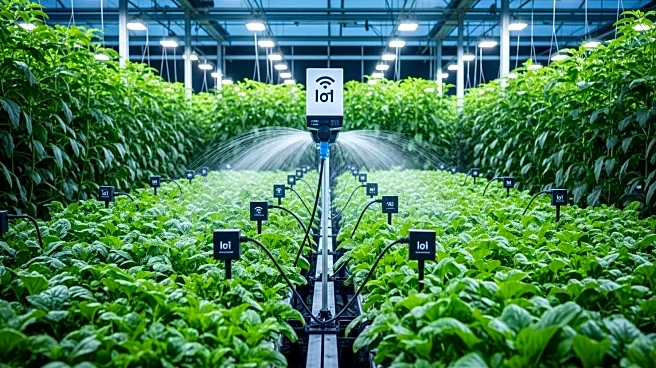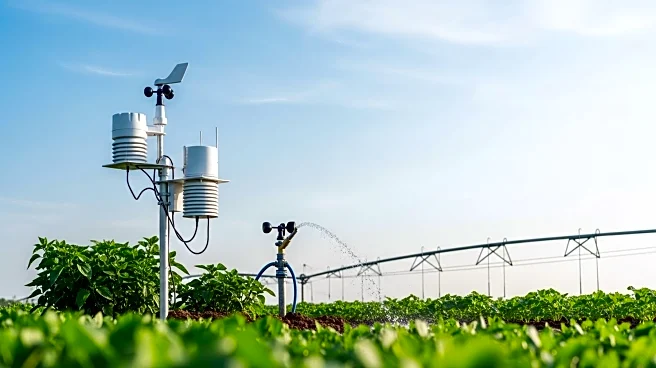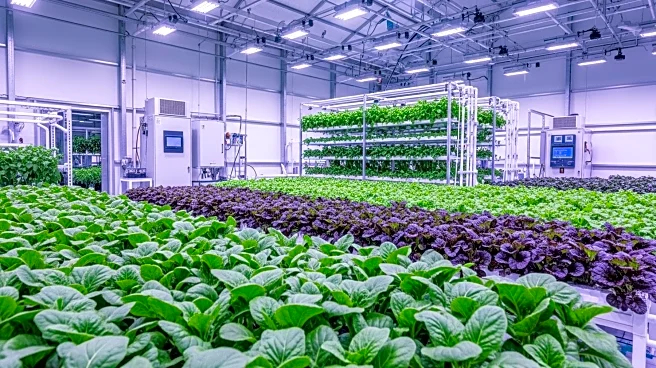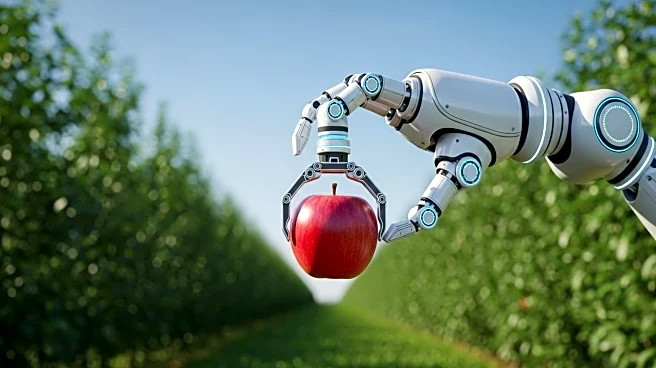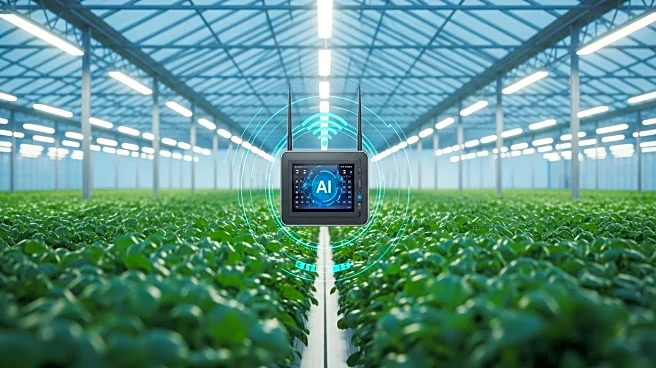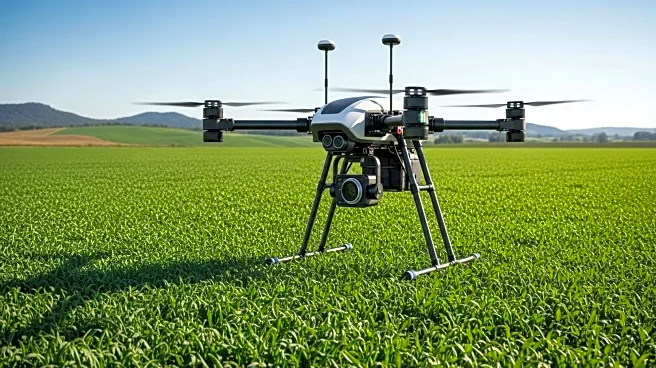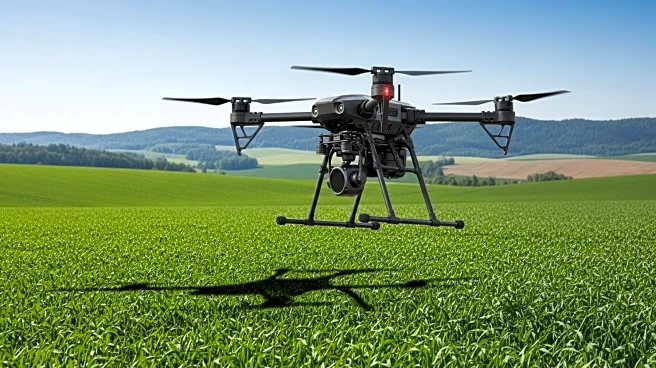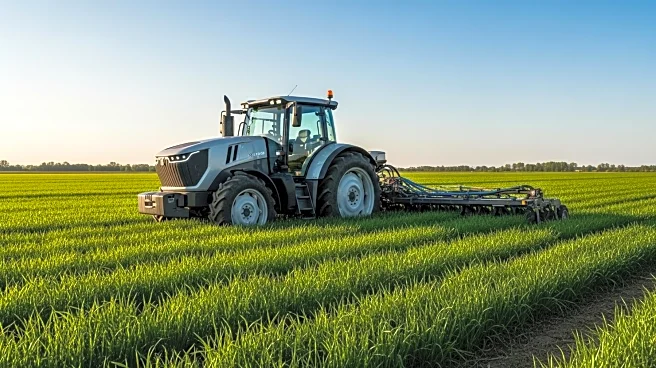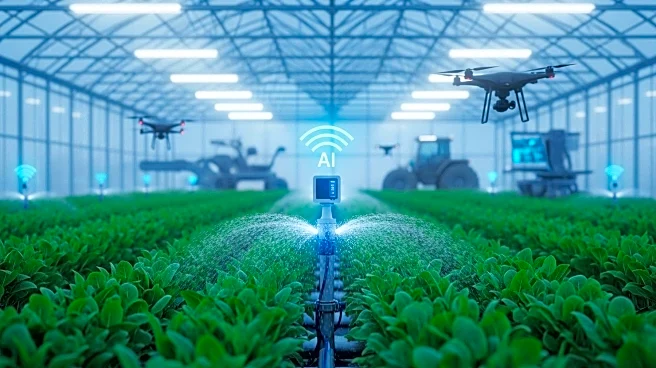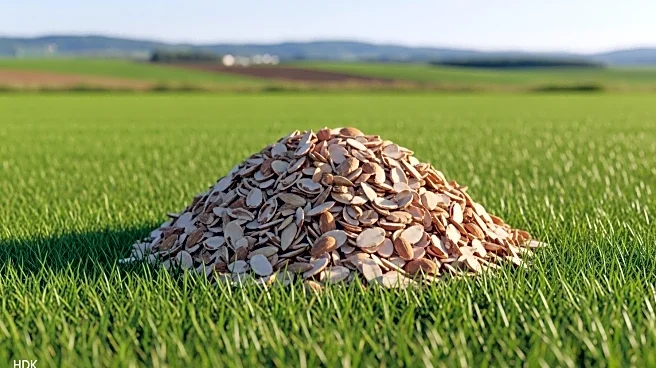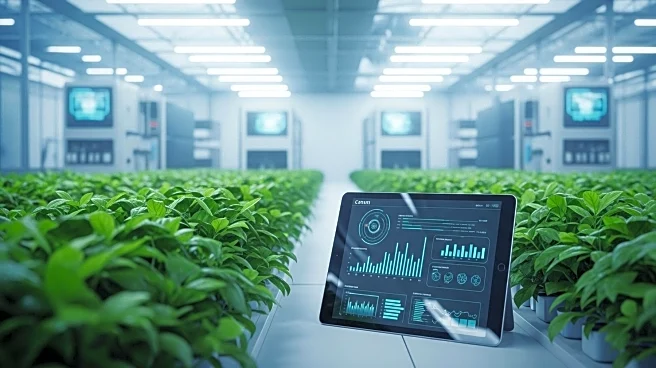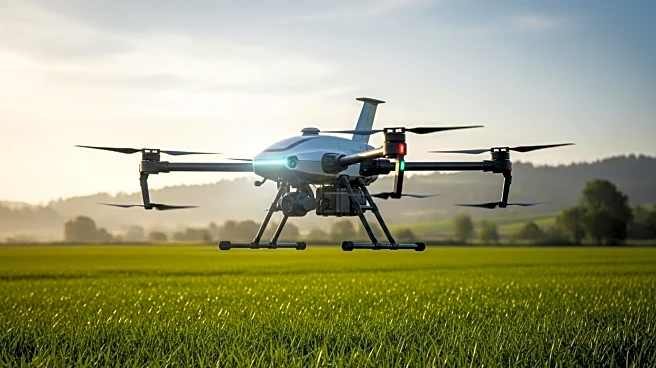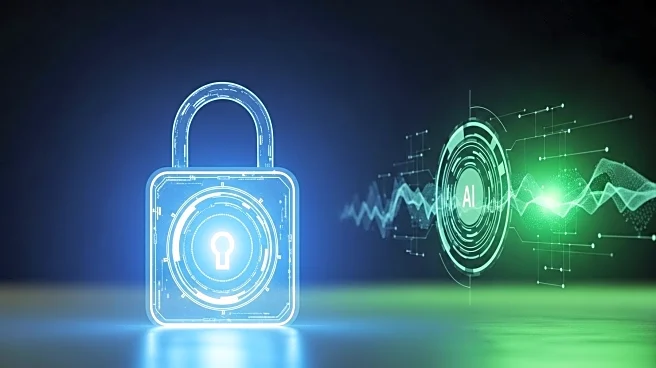What is the story about?
What's Happening?
The agriculture sector is undergoing a transformation with the integration of Internet of Things (IoT) technologies and artificial intelligence (AI) to enhance sustainability and efficiency. By 2025, over 70% of large farms globally are expected to use IoT sensors for real-time monitoring of soil and crop health. These technologies enable precision agriculture, optimizing irrigation, fertilization, and pest management. AI-driven analytics provide predictive insights, helping farmers anticipate and mitigate threats such as pest infestations and adverse weather conditions.
Why It's Important?
The adoption of IoT and AI in agriculture is crucial for addressing global challenges such as food security, resource conservation, and environmental sustainability. These technologies allow for more efficient use of resources, reducing waste and environmental impact. Farmers benefit from improved yields and reduced dependency on synthetic agrochemicals, contributing to healthier ecosystems. The shift towards data-driven agriculture supports resilience against climate change and enhances traceability in supply chains, fostering consumer trust.
What's Next?
Continued advancements in IoT and AI are expected to further refine agricultural practices, with potential developments in automated systems for crop management and enhanced blockchain integration for supply chain transparency. Stakeholders, including farmers, tech companies, and policymakers, will likely collaborate to expand the reach and capabilities of these technologies, driving innovation and sustainability in the sector.
Beyond the Headlines
The integration of IoT and AI in agriculture raises ethical considerations regarding data privacy and the digital divide. Ensuring equitable access to these technologies is essential to prevent disparities between large-scale and smallholder farms. Additionally, the reliance on technology necessitates robust cybersecurity measures to protect sensitive agricultural data.
AI Generated Content
Do you find this article useful?
